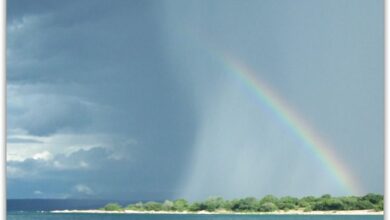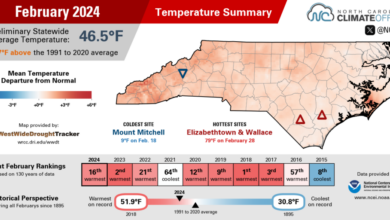Academics and the Grid Part 3: Visionaries and Problem Solvers

by Planning Engineer (Russell Schussler)
The potential of climate change with an unworkable grid is the most frightening potential scenario of all. We need visionaries and problem solvers to avoid this scenario.
This is the third installment in a series concerning academics and the grid. Part 1 observed that it was frequently the case that an academic paper which solved some component of a problem integrating a” green” resource would be interpreted to imply that all problems associated with integrating that “green” resource had been solved. Part 2 looked at the large body of papers published on the net zero transition and noted most of the attention was on smaller components, while the larger problems associated with the grid were ignored. This body of research as a whole generate serious misimpressions by distracting from the major concerns and causing policy makers to discount the significant challenges ahead in increasing renewable penetration.
In previous post Academics and the Grid Part 2: Are They Studying the Right Things?, it was noted that researchers on grid issues related to an energy transition, could be roughly divided into two camps. I referred to the first of these groups as Visionaries and the second group as Problem Solvers. The study work and recommendations from these two groups are approached in different ways, have differing audiences and unfortunately are unequal in impacting energy policy.
Problem Solvers tend to work on present and emerging challenges. These are highly technical academics, engineers and scientists. They tend to look for solutions to emerging problems without questioning their drivers. Problems solvers ask themselves how do we better adapt to the increase wind and solar we are seeing on the grid. For the most part they do not question or endorse the emerging trends. They see their work as important for maintaining the grid. While they are our best hope for adapting to change, some may see them as tools of the industry with to0 narrow a focus.
Visionaries are idealistic and consequently more likely to advance research and development to achieve greater societal goals. They see their work as necessary for the planet as a whole. They advocate for lowering carbon emissions and promote research to facilitate the goal of CO2 reduction. The Visionaries share the perspective that the “green energy” transition lies somewhere between “we can do this” to “once we get this going, we will figure it all out and the benefits will be enormous”.
In our overall society most individuals clump into one of two positions around climate change and “green” energy. In a previous post, Taxonomy of climate/energy policy perspectives I wrote:
One side cries that either we switch to superior clean renewable technologies or we face climatic doom. The other side responds that is there is no problem and we couldn’t fix it anyway. In the debate over climate and energy policy two independent major factors stand out. The first is our understanding around the probability, degree and immediacy of adverse effects from man-made Climate Change. The second factor impacting policy determinations concerns the suitability of today’s various available “clean” energy sources as policy options. Since the policy implications are driven by two major factors there should be at least theoretically four distinct policy perspectives. Unfortunately, most debate seems primarily to feature two factions and major policy concerns may get lost in the noise.
It’s rare to find someone unconcerned by climate change, but who think renewables will work really well with the grid. We don’t hear so much from those who greatly fear climate change but recognize current pursuits around clean energy are inadequate. Personally, I find the potential of climate change with an unworkable grid to be the most frightening potential scenario of all. I have never addressed or taken a position on climate and the need for carbon reduction. I argue for the need for reliable affordable energy independent of what the climate might do. I am more worried about the grid changes if we are to face climate doom as well. Such changes would be the most devastating on poor and moderate-income people. If we are to face disaster – a terrible inefficient unworking grid will magnify problems exponentially. Unworkable technology is not the answer to an impending crisis.
The Visionaries tend to frame climate is an impending existential threat and seek to minimize concerns around a green transition. The Problems Solvers, like me, are largely mum on the subject of climate change. When it comes to a green energy transition, they are similarly silent. Their grappling with the subject is very narrow and modest in approach. Reading between the lines in the technical journals it is apparent that there are many huge obstacles looming. Why are these not discussed more fully? Perhaps it is because there are many incentives to appear overly optimistic and few to none for espousing views that appear even moderately pessimistic.
Consider the perspectives of those writing as Problems Solvers. They are typically engineers or scientists with advanced expertise in that specialized area. The more the excitement and enthusiasm for a net zero transmission, the more their expertise is in demand and the greater the value of that expertise becomes. They may be working for or supported to some extent by the manufacturers of the “green” industry. Whether they are directly or indirectly tied to a green industry, their near term well being is tied to the continuation of such research. Chipping away at the problem and achieving minor successes is in their self-interest. There is likely no personal benefit to be gained by sharing observations that trends in the overall efforts to date do not suggest eventual success at a net zero level.
What are the drivers for the Visionaries? Overwhelmingly they are academics or work for entities with financial interests and expertise tied to the “green” future. Overwhelmingly in their working environment climate change is seen as an existential problem and the environment broadly supports efforts to reduce CO2 from electric generation. Academic publications are critical to hiring and promotional opportunities. Would an individual skeptical of the desired changes fare well when any such publications were reviewed? As much as such views may be needed, I don’t know who would hire or reward those who provide such focus and balance. The environment they work in many work in might be described as the eco-anxious, woke, true- believers or as Thomas Sowell described the “Anointed”. Academics are likely constrained from sharing concerns and noting short coming of “green” approaches. This may be too why they in Part 2 we did not see nuclear show up as a key word within the body of Net Zero research.
I will note that the mathematics used by the Academics to look at resource replacement, backup and transmission doesn’t go much beyond arithmetic with maybe some probability and statistics. Even then the study work is often done by modelling software. The mathematics needed for Problem Solvers to address the major concerns span mathematics from arithmetic to algebra, trigonometry, calculus and differential equations. It may be too much too much to expect that many Academics with technological knowledge and capabilities would devote their efforts to sabotaging their career.
Where then is there an incentive for knowledgeable academics and engineers to speak up about grid concerns? Once upon a time utilities were responsible for grid reliability. They had skin in the game and if there were problems, accountability ensued. In those days, when penetration levels were miniscule to small, it didn’t’ make sense for a utility to raise concerns and risk being caught in the crosshairs. The better short-term plan was to go ahead with preliminary efforts, knowing the grid was very robust, hoping that eventually things would work out or someone else would speak up. Then the federal entities FERC and NERC changed the interrelationships between basic functions and responsibilities. FERC worked to break up traditional utility structures into components, with particular concerns for fostering competition within the generation sector and providing open access to transmission facilities. NERC took over responsibility for reliability and “ensures” reliability through their compliance standards. Utilities are no longer responsible for reliability, but rather for meeting the reliability standards. NERC can impose fines up to $1,000,000 per day for standard violations. Hard to see the incentives for a utility sticking their neck out to raise long term reliability concerns broadly or with the monitoring entity.
I am greatly suspicious of “conspiracy theories”. I can’t believe that any parts of the green movement or any governments are plotting to bring down the grid and set back industrialized civilization. But if they were, a good strategy would look a lot like what we are seeing. How might one seek to turn the economic and reliable grid into a costly, complicated system prone to blackouts? Discarding dependable generators and replacing with asynchronous intermittent technology would be a good way. To support this transition and forestall questions, in the public arena, have reputable scientists (Academics) pick small problems and show that they might be solved. This work will distract from the real problems. Examining the challenges evaluated by the Academics, the transition might look doable. In the background technical experts (the Problem Solvers) work on forestalling the problems that will soon become insurmountable. While the grid transition is not a nefarious plot, we might be better off it was. As Dietrich Bonhoeffer described malice may be a lesser enemy that what we face. Dealing with well-intentioned but mislead true believers who become more strident and committed in the face of increasing evidence of the short comings may be a much more alarming scenario than what is described in this paragraph.
As the transition to net-zero continues, what should we expect to see? The optimistic scenario is a more widespread understanding of the complexities involved leading to more reasonable “good enough” energy plans balancing economics, reliability and environmental concerns. This scenario might include large additions of nuclear with natural gas resources filling the gap until they are available.
The alternative scenario is that the net zero approach continues with wind and solar as key players. As grid problems become more apparent eventually grid concerns will reach a wider audience. You will find crossover publications between academics and problem solvers. If nothing changes as to incentives, these papers will be largely optimistic about what capabilities are just around the corner. You will see more and more how asynchronous resources might emulate the functions currently provided by synchronous rotating machines. We might see a grand plan for rapid grid transition as we see calls for energy transition now.
The cost implications could be astounding, as emulating essential reliability services generally requires a large amount of otherwise unusable capacity to be on hand. Cost estimates associated with the ‘green transition” are notoriously over optimistic. Cost should not be thought of as the major obstacle. Perhaps the most critical concern is that all these controls are making the complex grid even more and more complex as we get farther and farther away from our extensive real-world experience. For a more detailed description of these problems see this posting, Renewables and Grid Reliability. Experience in many areas show we can better build complex systems by tinkering with improvements over time, rather than having them emerge full formed like Athena from the head of Zeus.
Designing large complex systems is fraught with challenges. There can be huge gaps between what works on paper and what works in practice. A couple energy projects stand out for having “green hopes” being dashed by reality. The Kemper plant was to be a flagship project for clean coal. It was a key component of President Obamas Climate Plan. Initially it was supposed to cost $3 billion, it ended up costing over $7 billion. It was supposed to gasify coal and store the captured carbon but that component of the plant proved unworkable and it cannot use coal or capture carbon. Now it functions as a 582 MW natural gas plant that could have been built for less than one tenth of the $7 billion in cost.
Ivanpah was one of the most ambitious solar projects, at a cost of $2.2 billion. The 400 MW plant stretches across 3,600 acres of the Mojave Desert. The plant concentrates solar thermal energy to produce steam to generate power. It’s less well known that the plant used natural gas as part of the process. The plant was plagued with problems and did not perform nearly as well as expected. While generation was much lower than expected, the amount of natural gas used by the plant greatly exceeded expectations. I found record for five years of the facilities operation (2014-2018). Were the natural gas, used to preheat the water, instead used to power a combined cycle plant it could have provided roughly 20 to 25% of the total plant output during that time period. I believe that the plant’s performance is improving with time, but it is hard to tell. When projects of this sort fail, the problems encountered are not trumpeted as loudly as the initial optimistic assumptions. The plant has been in operation since 2014 but the DOE webpage for the site while referring to the original projections for annual generation, does not have any readily accessible information or links to actual generation or facility performance. There are always great press releases on new complex things that will work wonderfully, but when they don’t much is lost in the memory hole.
Evidently the originally intended functioning of both Plan Kemper and Plant Ivanpah were not only considered possible but also considered highly likely. They both worked well in theory and on paper but proved too complex to implement as intended in the real world. Could large clean coal plants and large solar thermal plants emerge over time through tinkering and improvements on more modest proposals which grew in complexity over time? That would seem possible, but the likelihood of success goes down the more quickly the transition and the more drastic the change.
We are a long way from figuring out how to solve for a net zero grid in terms of just theory and what might work on paper for many fundamental emerging grid problems. Work is underway on the puzzle pieces with mixed results. How they might fit together takes it to another level. The challenges of a quick transition to a net zero carbon grid dwarf the complexities of the Kemper and Ivanpah projects. Bright engineers, scientists and academics are working on the challenges, but they don’t trumpet their concerns as do those with “victories” on smaller problems. It almost seems at time as if all the flash and attention is focused on the more “minor” successes to distract an audience from the more serious concerns emerging from wind and solar. The Visionaries will have their vision and Problem Solvers will be committed to their problems. Who will tie true vision to the actual problems? It will be dangerous if policy makers are swayed by those who are overly optimistic. We can’t survive a grid transformation that looked good on paper but in the end turns out to be as disastrous as Kemper and Ivanpah.
Acknowledgements: Comments from Roger Caiazza are appreciated.




